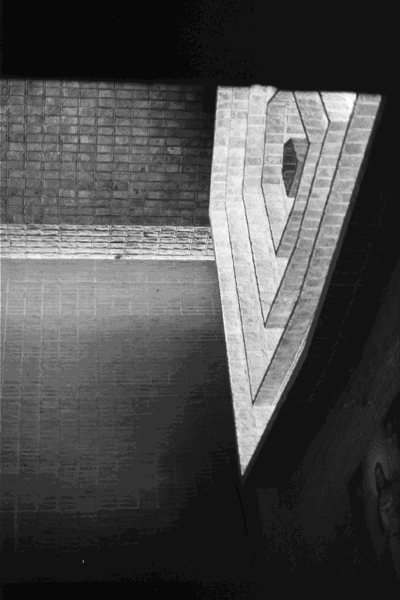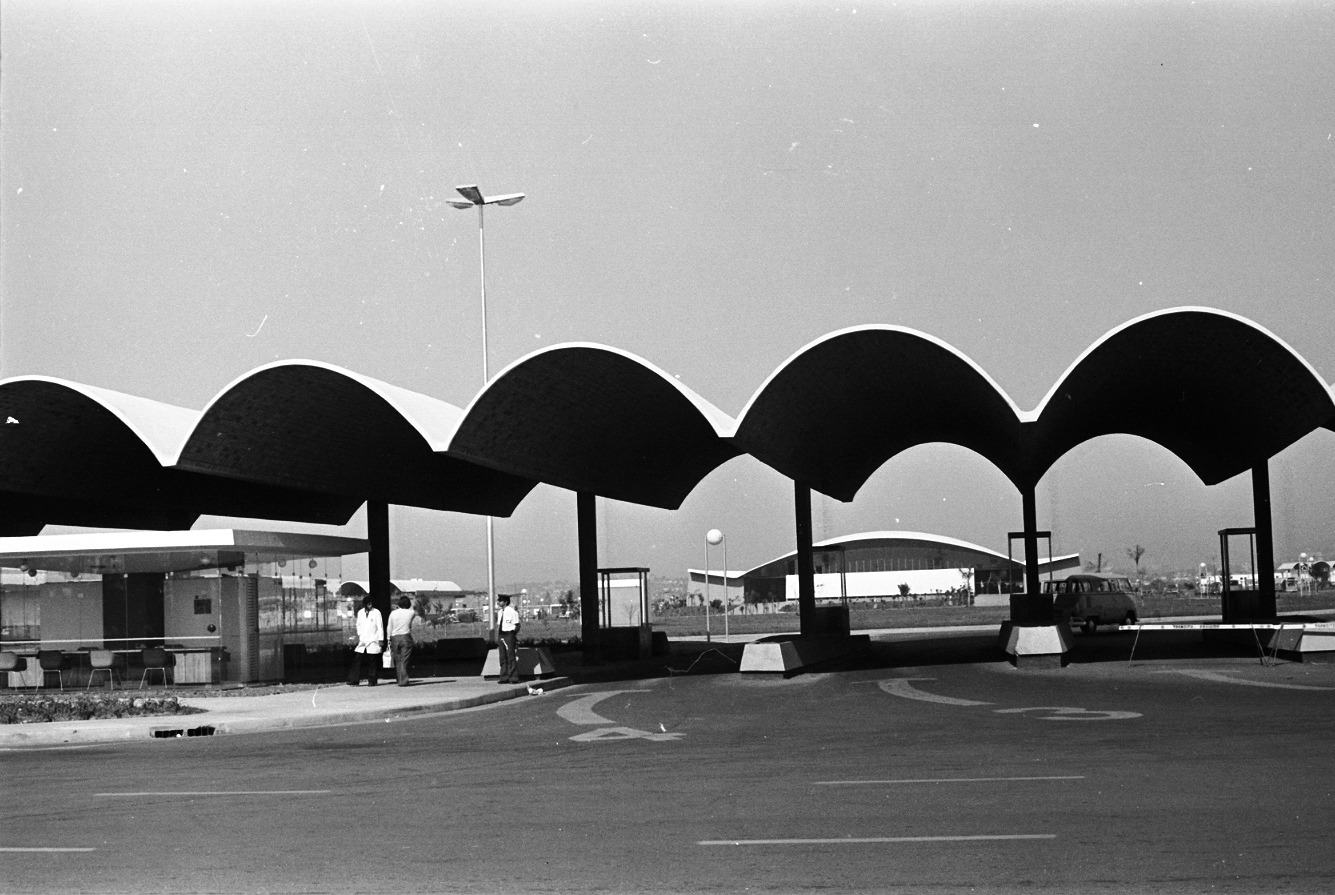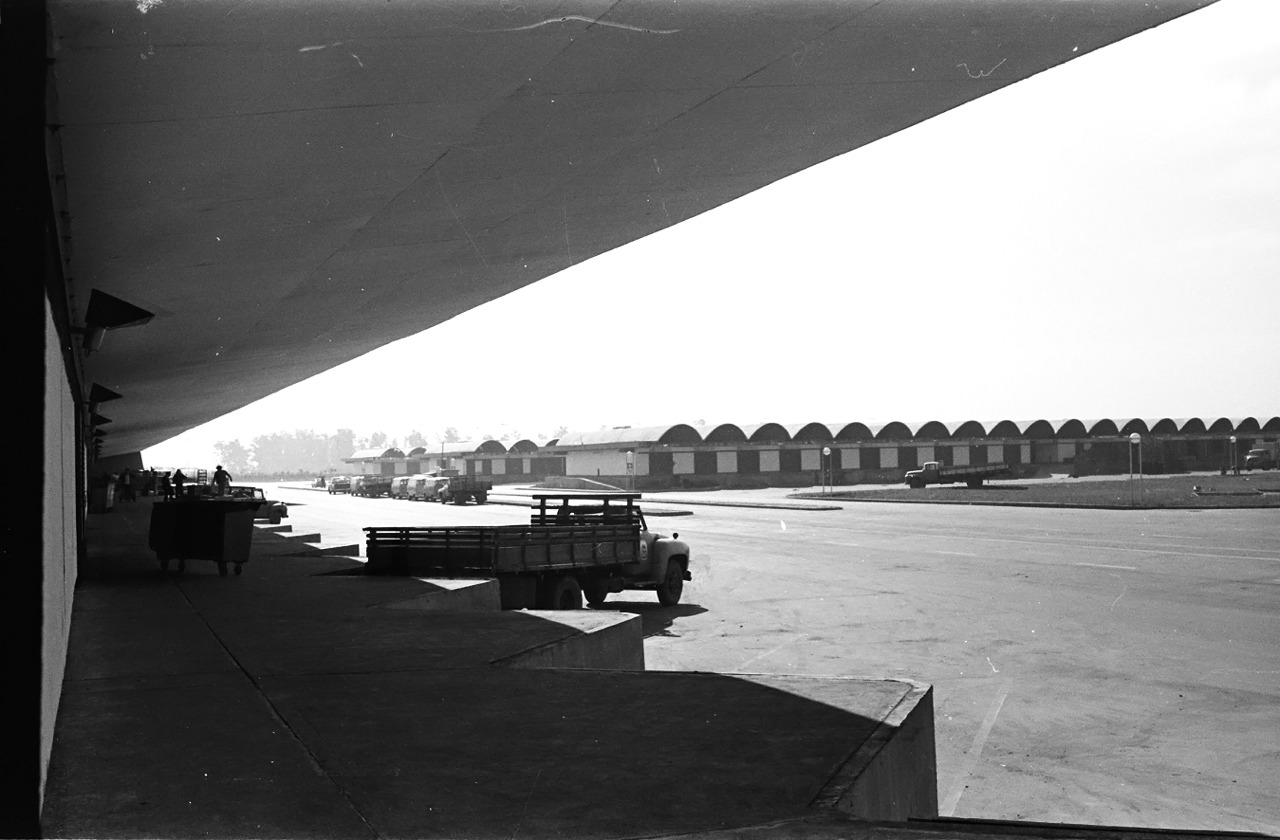-
Catching
the CurveEladio Dieste, the brick and a certain ethos
By Florencia Rodríguez
-
The architect, critic and founder of PLOT, Florencia Rodríguez sings the praises of the “symphonic” works of the Uruguayan architect and engineer Eladio Dieste and of his love affair with brick.
In analysing modern architecture in Latin-America one rapidly comes to realise that it’s not possible to think about the continent as an unbroken whole. There are of course some shared colonial histories and traditions between countries, but the way in which these interacted with local vernaculars or particular idiosyncrasies resulted in many different ways of thinking about and approaching the built environment. It might be more accurate to think about South America as the sum of different regions, each defined by its geographical features like the Andes, the Amazon or the Río de la Plata.
In the case of what we call the Cono Sur or Southern Cone of the continent, the Río de la Plata (the River Plate) has played an important part in the constituting of a certain way of being modern. This estuary or gulf, dividing Argentina from Uruguay, has on its opposite shores those two countries’ capital cities, respectively Buenos Aires and Montevideo, which thus share opposing but equally phantasmagoric views of the other side, giving each a constant feeling of otherness.
During the first decades of the twentieth century, immersed in the construction of their political identities and institutions, these two countries gave rise to strong eclectic tendencies, stylistic revivals and beaux arts academicism leading on to a very French take on early modernism, with Le Corbusier in the role of pioneering hero above all.Previous page: Cristo Obrero Church façade, Atlántida, Uruguay, 1958-60. (Photo: Samuel Smith)
-
Uruguay and Argentina weren’t defined then by the epic public and monumental modern architecture that was seen in the growth of other Latin American countries like Brazil or Mexico. What was particular about them took place on the domestic, residential scale, changing completely the look of their cities and the lifestyles of their people. Montevideo’s waterfront and skyline, for instance, is still defined by the most subtly modernist, homogeneous, ascetic and white architecture imaginable, extending for block after block into the distance.
Confronting this formal field condition, which some felt artificially imposed upon local conditions, various voices started to urge for a more equitable and responsive relationship between society and its built environment. -
One of the most interesting representatives of this philosophy was Eladio Dieste, the Uruguayan engineer and architect, born in 1917, who claimed to have “discovered in brick a material with unlimited possibilities”, and, feeling it had been almost completely ignored by modern technology, began to study and use it structurally. He rationally maintained that a universally modernist form of architecture would not be appropriate for this southern region of the world due to “lack of suitability, modesty and seriousness when facing the architectural and constructional problems that are specific to our very different environment”.
He considered architecture to be an art form subject to morality: one that should both drive and provide the impulse for fulfilling mankind’s potential. He was an idealist, an expressionist and a romantic who chose this little, repetitive ceramic object as the tool to push the limits of form-making and perception of space. In the process, he completely annulled the reductive distinction between high tech and low tech.
Dieste thought that the use of brick caused a shift in the predominance of prismatic shapes, with their flat surfaces and edges, towards more complex surfaces as diaphragms, vaults, angled structures or polyhedral domes. He asserted: “This new technological path has obvious formal and therefore architectural consequences. With the use of brick, the elaboration and construction of space, which is the goal of architecture, is defined and limited using forms, colours and textures. The fact that this technology leads to the predominance of varied surfaces tends to produce more magnificent – one could say symphonic – spaces”. It is in this contrast to the auto-referential, element-based or syntactic thinking of much modernist architecture, that the significance of the specificity of each of his projects resides. Details and views of a selection of Dieste’s projects including Cristo Obrero Church, the gymnasium in Durazno and the Montevideo Shopping Centre. (Photos: Samuel Smith)
Details and views of a selection of Dieste’s projects including Cristo Obrero Church, the gymnasium in Durazno and the Montevideo Shopping Centre. (Photos: Samuel Smith) -
CEASA Produce Market, Porto Alegre, Brazil, 1969-72.
(Photo: João Alberto Fonseca da Silva, courtesy Acervo João Alberto) -
Underlining a very sensitive commitment to his work, Dieste thought that if architecture arrived at being an art form and thus achieved happiness, it would make intelligible the indecipherable mystery of the world. His ideas of symphonic spaces and a contemplative communion make us think of a type of baroquism in which the intentions of an extreme (and magical) coherence between all strata of architecture, between materiality, technology, lighting, geometry and perception, coexist.
He experimented with different typologies: churches, houses, bridges, isolated cultural structures and industrial buildings, together forming a vast corpus of work. Significant projects of his include the Christ the Worker’s Church in Atlántida, St. Peter’s Church in Durazno, the bus station in Salto and the CEASA market in Porto Alegre. He built mainly in Uruguay and Brazil but his influence spread through the region as a whole and is still felt today. There are amazing examples of this in contemporary Paraguayan architecture for instance, and in many Argentinian young architects such as Francisco Cadau, Becker-Ferrari, Diego Arraigada and BaBO. His son Eduardo is an engineer as well, who provides a continuity of the family tradition and cooperating with many of these architects.

CEASA, Porto Alegre, Brazil (Photos: João Alberto Fonseca da Silva, courtesy Acervo João Alberto)
-
»Dieste considered architecture to be an art form subject to morality: one that should both drive and provide the impulse for fulfilling mankind’s potential.«
Silo Torrevieja, Montevideo,Uruguay, 1993. (Photo: Alberto Marcovecchio, Audiovisual Media Service, Farq. UdelaR. 2006)
-
Montevideo Shopping Centre, Uruguay, 1985. (Photo: unknown author. Source)
-
Florencia Rodríguez, architect, critic as well as founder and editorial director of PLOT (2010), the Buenos Aires-based magazine on critical thinking about contemporary architecture. In 2013–14, as part of her academic training, she did the Leob Fellowship in Harvard GSD in Cultural Studies and Critical Theory and Analysis.
PLOT
It is interesting to acknowledge that Eladio Dieste’s work is so complex that it has always been hard to categorise. Many critics name him as one of the most individual of the pioneering modernists, others see in him the expression of the vernacular and yet others find traces of the baroque – as suggested earlier. These multiple readings of his work indicate its significance, in that it cannot be reduced or synthetised into a style, or be seen as merely a simple reflection of a trend or zeitgeist.
His was a search for an essential unity translated into a magnificent constructive pragmatism, rich in political and social ethics, but transformed simultaneously also by a simple belief in the power of beauty and happiness.
Metro Maintenance Hanger, Rio de Janeiro, Brazil, 1971-79. (Photo: Vicente del Amo)
-
Search
-
FIND PRODUCTS
PRODUCT GROUP
- Building Materials
- Building Panels
- Building technology
- Façade
- Fittings
- Heating, Cooling, Ventilation
- Interior
- Roof
- Sanitary facilities
MANUFACTURER
- 3A Composites
- Alape
- Armstrong
- Caparol
- Eternit
- FSB
- Gira
- Hagemeister
- JUNG
- Kaldewei
- Lamberts
- Leicht
- Solarlux
- Steininger Designers
- Stiebel Eltron
- Velux
- Warema
- Wilkhahn
-
Follow Us
Tumblr
New and existing Tumblr users can connect with uncube and share our visual diary.
»What the map cuts up, the story cuts across.«
Michel de Certeau: Spatial Stories
Keyboard Shortcuts
- Supermenu
- Skip Articles
- Turn Pages
- Contents


